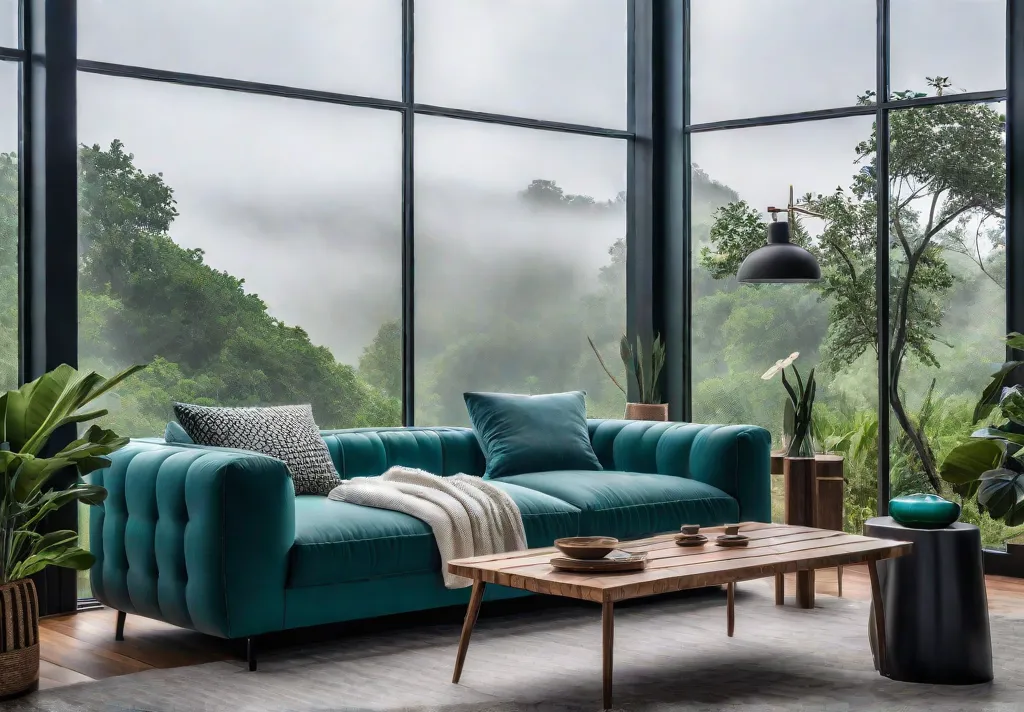Imagine this: You’re sinking into a plush, handcrafted sofa, the soft fabric a blend of recycled plastic and organic cotton. Beside you, a reclaimed wood coffee table boasts a rich patina and intricate woodworking details from its former life as a barn beam. The room is bathed in natural light, filtered through sheer curtains made from sustainable bamboo fibers.
This isn’t just a cozy daydream – it’s the future of eco-conscious interior design. As we become more aware of our environmental impact, the demand for sustainable modern living room furniture is skyrocketing. Homeowners seek stylish yet ethical pieces that reflect their values while reducing their carbon footprints.
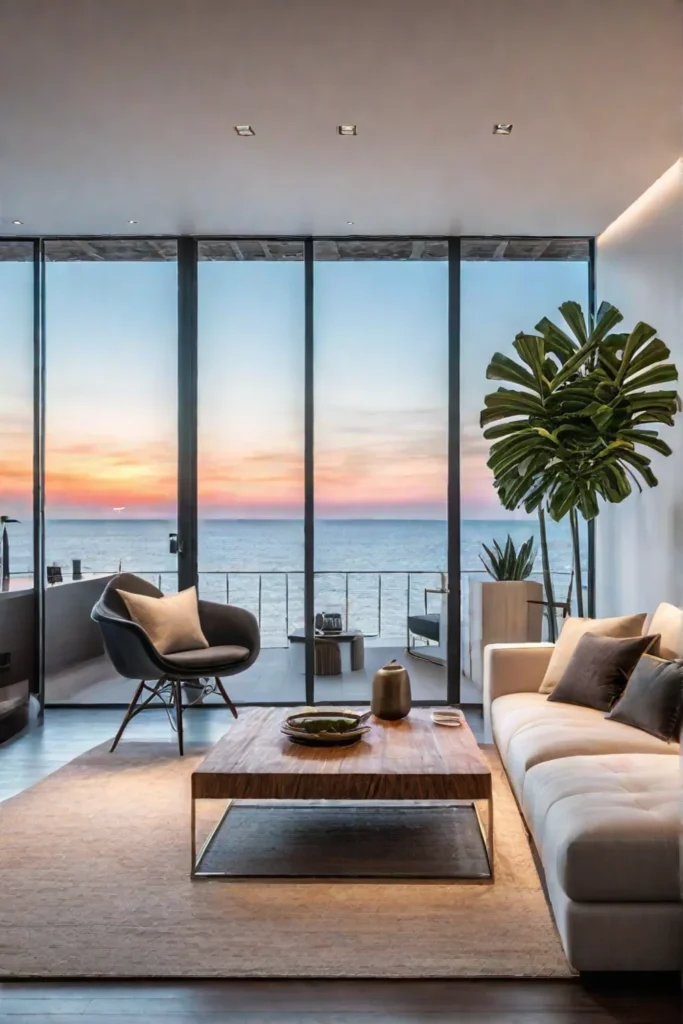
In this article, we’ll explore the latest trends and innovations in eco-friendly furniture for the heart of your home. From upcycled vintage treasures to cutting-edge materials, you’ll discover how to curate a living space that’s both beautiful and planet-friendly. Get ready to embrace a new era of sustainable style.
Sustainable Materials: Nature’s Gifts Reimagined
Regarding modern living room furniture, the materials used are key to minimizing environmental impact. Fortunately, designers and manufacturers are increasingly creative with sustainable alternatives to traditional options. These eco-conscious choices reduce waste and offer unique textures and aesthetics that add character to your space.
The Rise of Recycled Plastics
You might be surprised that those sleek, contemporary chairs or stylish ottomans could be made from recycled plastic bottles or food containers. Manufacturers divert millions of tons from landfills and oceans annually by repurposing post-consumer plastic waste. The resulting furniture is durable, low-maintenance, and often indistinguishable from virgin plastic pieces.
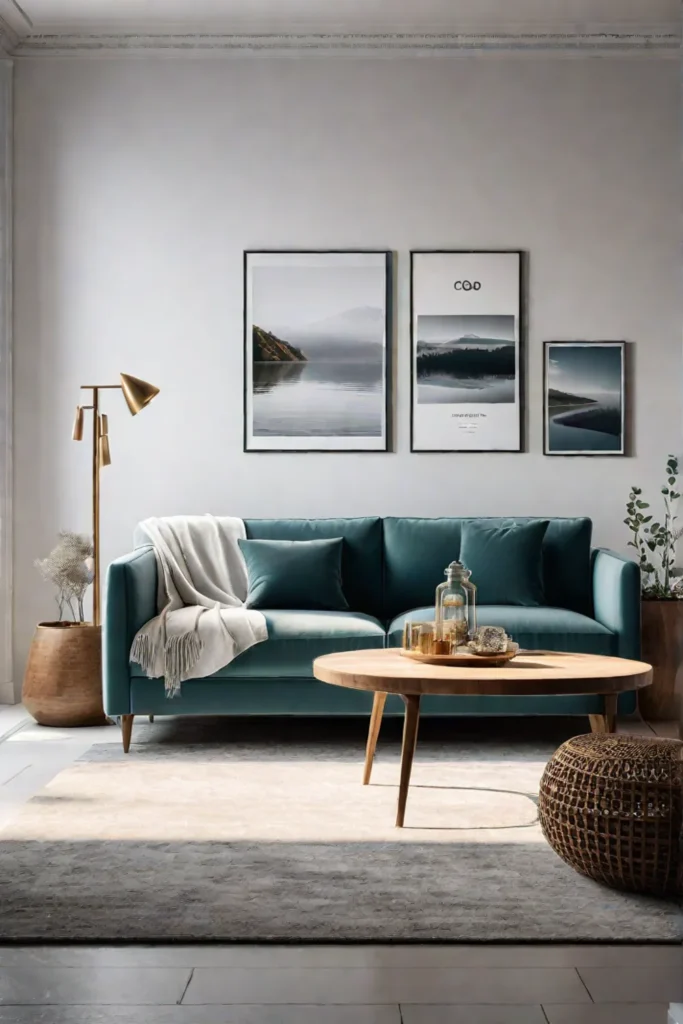
Moreover, recycled plastic can be molded into virtually any shape or color, creating a world of design possibilities. Whether you prefer a bold, modern aesthetic or something more subdued, a recycled plastic piece suits your taste.
The Enduring Appeal of Bamboo
Bamboo has long been a favorite among eco-conscious consumers, and for good reason. This rapidly renewable grass grows quickly with minimal water and pesticide requirements, making it a sustainable alternative to slow-growing hardwoods.
In the living room, bamboo shines in a variety of applications. Sleek bamboo flooring offers a warm, natural look underfoot. Woven bamboo chairs and sofas add textural interest and an organic vibe. Even decorative accents like bamboo blinds or planters can tie an eco-friendly space together.
Reclaimed Wood: Stories Etched in Grain
There’s something undeniably charming about reclaimed wood furniture. Each piece carries the history and character of its former life, whether salvaged from an old barn, factory, or home. By repurposing these materials, we reduce the demand for newly harvested timber and celebrate the beauty of age and imperfection.
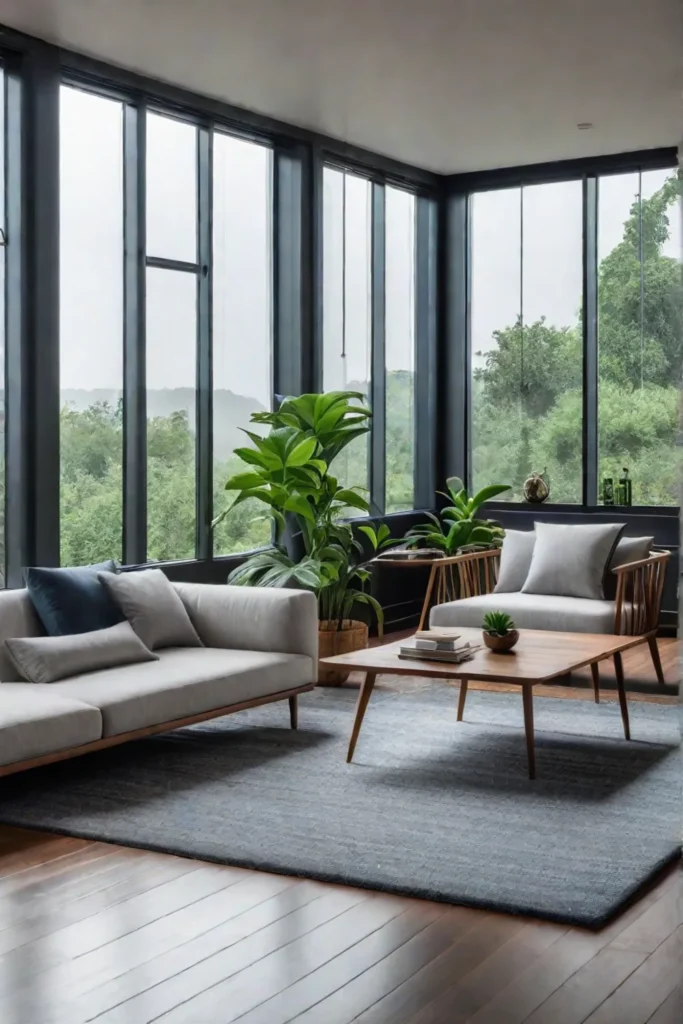
Reclaimed wood coffee tables, media consoles, and shelving units can infuse your living room with rustic warmth and appeal. Imagine the conversations sparked by a stunning dining table crafted from centuries-old ship planks or a bookcase built from reclaimed barn beams.
The Versatility of Cork
Cork is often overlooked as a sustainable material, but this renewable resource harvested from cork oak trees is making a comeback in modern design. Cork is biodegradable and recyclable, and its natural sound and temperature insulation properties make it ideal for living spaces.
This unique material adds warmth and texture to any room, from cozy cork flooring to upholstered ottomans and chairs. Cork’s softness and flexibility also make it a comfortable choice for seating, while its natural variation in color and pattern ensures each piece is truly unique.
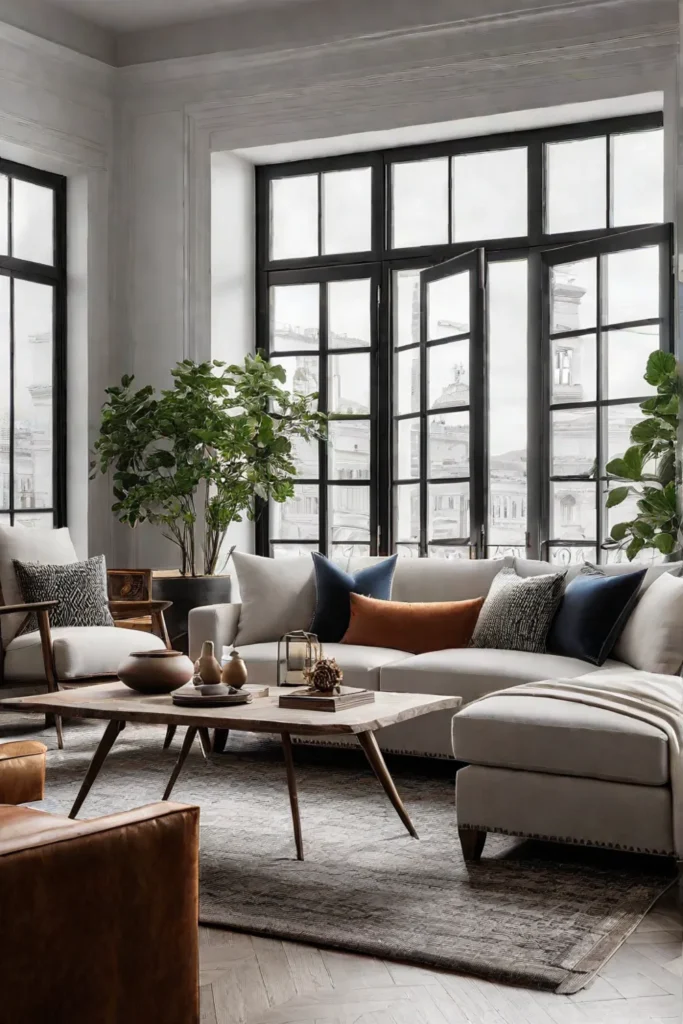
By embracing these innovative, eco-friendly materials, you can create a living room that’s stylish and aligns with your values. Whether you prefer the sleek modernity of recycled plastics, the organic beauty of bamboo, the rustic charm of reclaimed wood, or the versatility of cork, there’s a sustainable option to suit every taste.
Upcycling: Breathing New Life into Old Treasures
In the world of sustainable design, one person’s trash is truly another’s treasure. The art of upcycling—transforming discarded objects into beautiful, functional pieces—is taking the modern living room by storm. Not only does this creative process reduce waste, but it also allows you to curate a space that’s uniquely yours.
The Allure of One-of-a-Kind Pieces
Perhaps the greatest appeal of upcycled furniture is its inherent individuality. Each piece has a story, from the materials used to the skilled hands that crafted it. An upcycled coffee table might be fashioned from reclaimed wood beams and industrial pipes, while a vintage dresser could be repurposed into a striking media console.
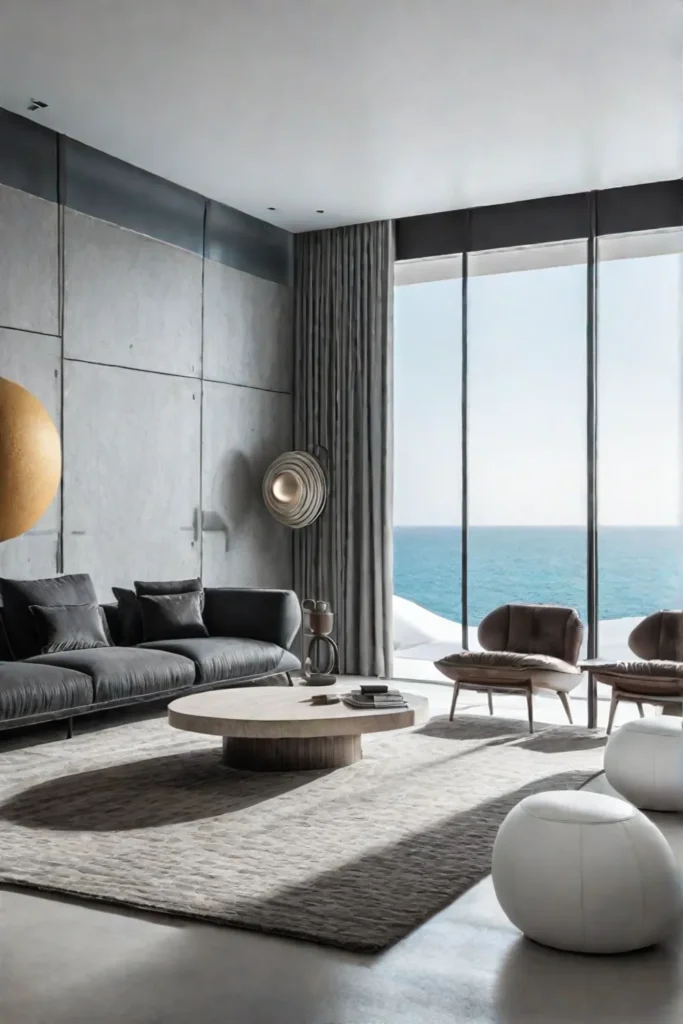
These one-of-a-kind pieces become conversation starters, infusing your living room with personality and character. They’re also a tangible reminder of the creativity and resourcefulness that goes into sustainable design.
The Thrill of the Hunt
For many eco-conscious homeowners, the joy of upcycling lies in the hunt for unique materials and objects to repurpose. Scouring flea markets, salvage yards, and even curbsides can yield unexpected treasures waiting to be transformed.
Imagine the satisfaction of spotting a weathered wooden crate and envisioning its potential as a rustic side table or magazine rack. Or the excitement of finding an ornate vintage mirror frame that could be repurposed into a stunning piece of wall art.
The Art of Reinvention
Of course, the true magic of upcycling happens in the hands of skilled artisans and DIY enthusiasts. With a keen eye for design and a touch of creativity, ordinary objects can be reimagined into extraordinary living room centerpieces.
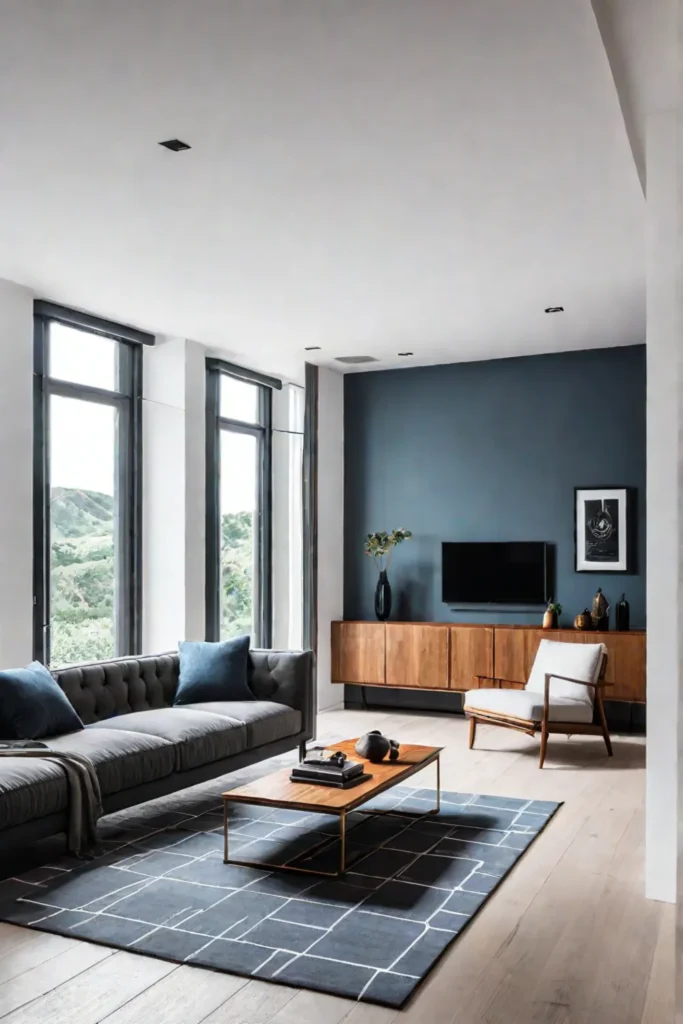
For example, a discarded metal drum could be transformed into a striking industrial-style coffee table with a glass top and sleek hairpin legs. Or an old wooden door might find new life as a one-of-a-kind headboard or room divider, its intricate carvings and patina adding character to the space.
Whether you source pre-upcycled pieces or take on a DIY project yourself, incorporating upcycled furniture into your living room is a stylish way to reduce waste and celebrate the art of reinvention.
Sustainable Brands: Leading the Charge
As consumer demand for eco-friendly furniture grows, a new crop of sustainable brands is emerging to meet this need. These companies set the standard for ethical and environmentally conscious manufacturing, from their materials to their production processes.
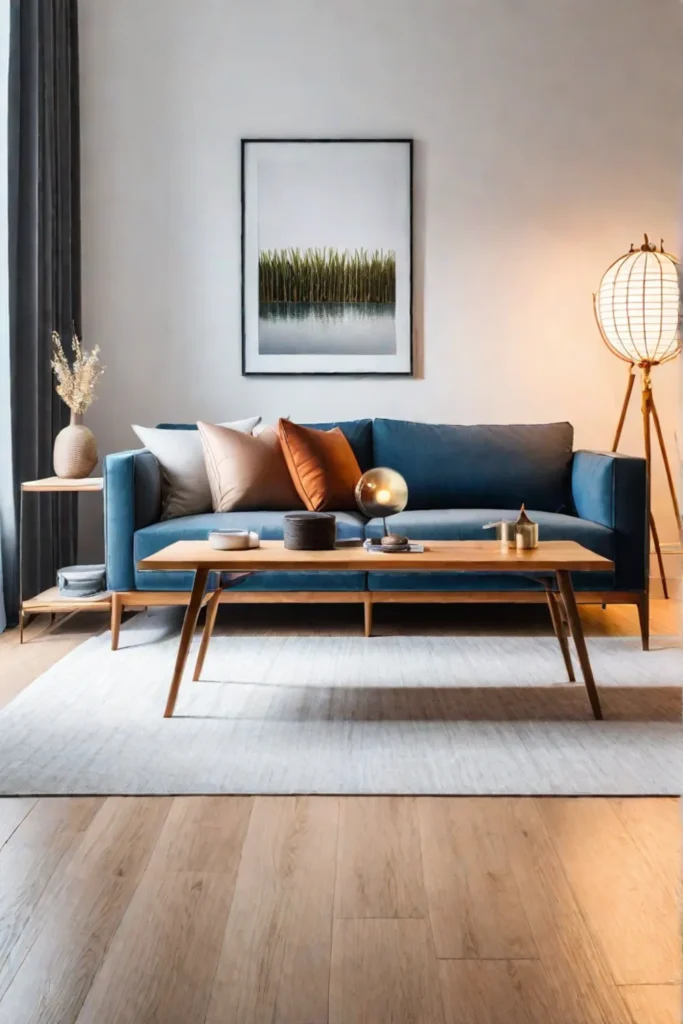
Certifications and Standards
When shopping for sustainable living room furniture, it is essential to look for reputable certifications and standards that back up a brand’s eco-friendly claims. Organizations like the Forest Stewardship Council (FSC), the Global Organic Textile Standard (GOTS), and the Cradle to Cradle Products Innovation Institute offer rigorous guidelines and third-party verification for sustainable materials and manufacturing practices.
Brands with these certifications have undergone extensive auditing to meet strict environmental, social, and economic criteria. From responsibly sourced woods to organic fabrics and non-toxic finishes, these brands prioritize sustainability at every step of the production process.
Innovative Materials and Processes
In addition to using sustainable materials like those discussed earlier, many eco-conscious brands are pioneering innovative new furniture design and manufacturing approaches. For example, some companies are experimenting with mycelium – the root structure of mushrooms – as a renewable, biodegradable alternative to traditional foam fillings.

Other brands are embracing closed-loop manufacturing systems, where waste from one product becomes the raw material for another, minimizing environmental impact. And some are even exploring the potential of 3D printing technology to create customized, on-demand furniture with minimal waste.
Transparency and Traceability
One hallmark of a truly sustainable brand is transparency about its sourcing, production, and distribution processes. These companies often provide detailed information about the origins of their materials, the working conditions in their factories, and the carbon footprint of their operations.
Many also prioritize traceability, allowing customers to trace the journey of their furniture from raw materials to their doorstep. This level of transparency builds trust with conscious consumers and holds brands accountable for their environmental and social impact.

By supporting these pioneering sustainable brands, you’re investing in beautiful, high-quality furniture and contributing to a more ethical and eco-friendly future for the home furnishings industry.
Eco-Conscious Manufacturing: The Unseen Impact
While the materials used in furniture construction are a crucial aspect of sustainability, it’s equally important to consider the behind-the-scenes manufacturing processes. From energy consumption to waste management, how our furniture is produced can have a significant environmental impact.
Reducing Energy Consumption
Traditional furniture manufacturing is often energy-intensive, relying on fossil fuels to power factories and machinery. However, many eco-conscious brands are reducing their energy consumption and transitioning to renewable sources like solar, wind, and hydroelectric power.
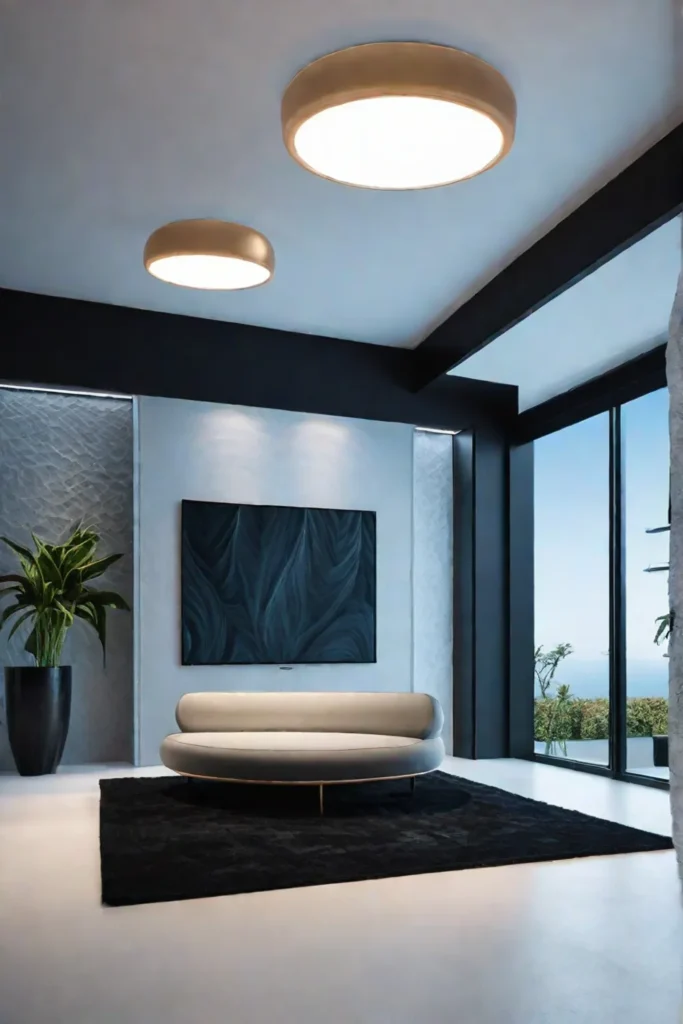
By harnessing clean energy, these companies minimize their carbon footprints and contribute to a more sustainable future. Some brands even offset their remaining emissions through carbon offset programs, effectively achieving carbon neutrality.
Minimizing Waste and Pollution
Furniture production can generate substantial waste, from excess materials and packaging to chemical byproducts and emissions. Sustainable manufacturers are implementing innovative strategies to minimize this waste and reduce their overall environmental impact.
This might include closed-loop systems that recycle and repurpose manufacturing waste, water treatment facilities to prevent pollution and strict controls on harmful chemicals or finishes. Some brands even offer take-back programs, allowing customers to return old furniture for proper recycling or disposal.
Ethical Labor Practices
While environmental sustainability is critical, true eco-consciousness also encompasses social responsibility and ethical labor practices. Many sustainable furniture brands prioritize fair wages, safe working conditions, and worker empowerment throughout their supply chains.
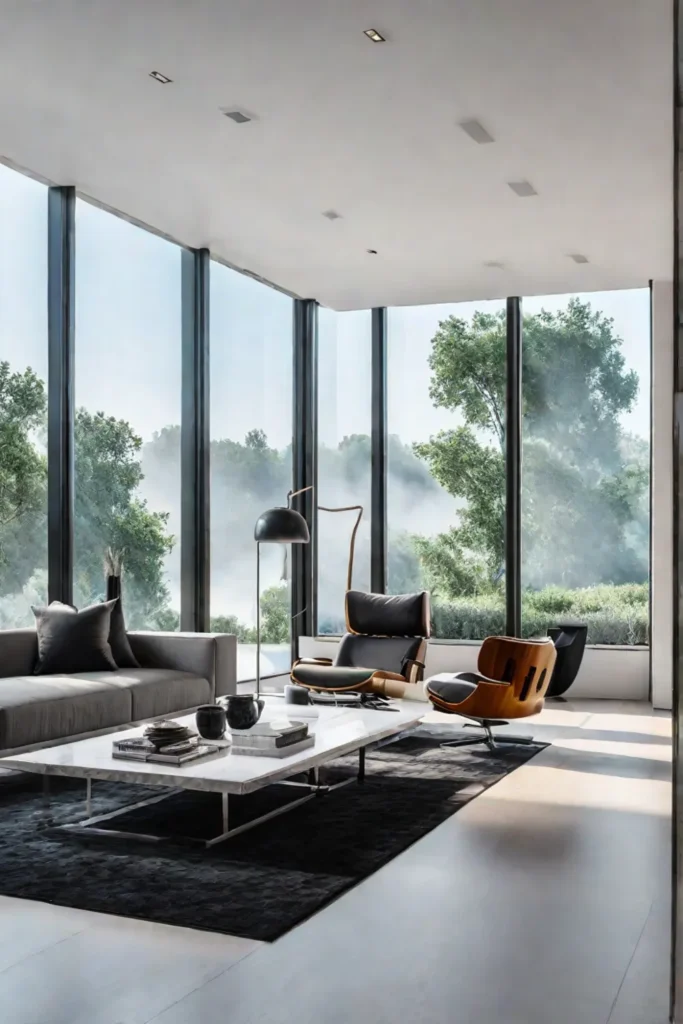
By partnering with factories and artisans who share these values, these companies are creating beautiful, eco-friendly products, supporting local communities, and promoting economic sustainability.
When evaluating sustainable furniture options, it’s important to consider the full lifecycle of the product, from raw material sourcing to end-of-life disposal. Choosing brands that prioritize eco-conscious manufacturing processes ensures that your living room furniture has a minimal environmental impact at every stage.
Conclusion: Curating a Sustainable Sanctuary
As we’ve explored, creating an eco-friendly modern living room is about more than choosing the right furniture. It’s a holistic approach that considers the materials, manufacturing processes, and ethical practices behind each piece.
By embracing sustainable materials like recycled plastics, bamboo, reclaimed wood, and cork, you can infuse your living space with unique textures and character while reducing environmental impact. Upcycled and repurposed furniture offers the opportunity to curate a truly one-of-a-kind space that celebrates creativity and resourcefulness.
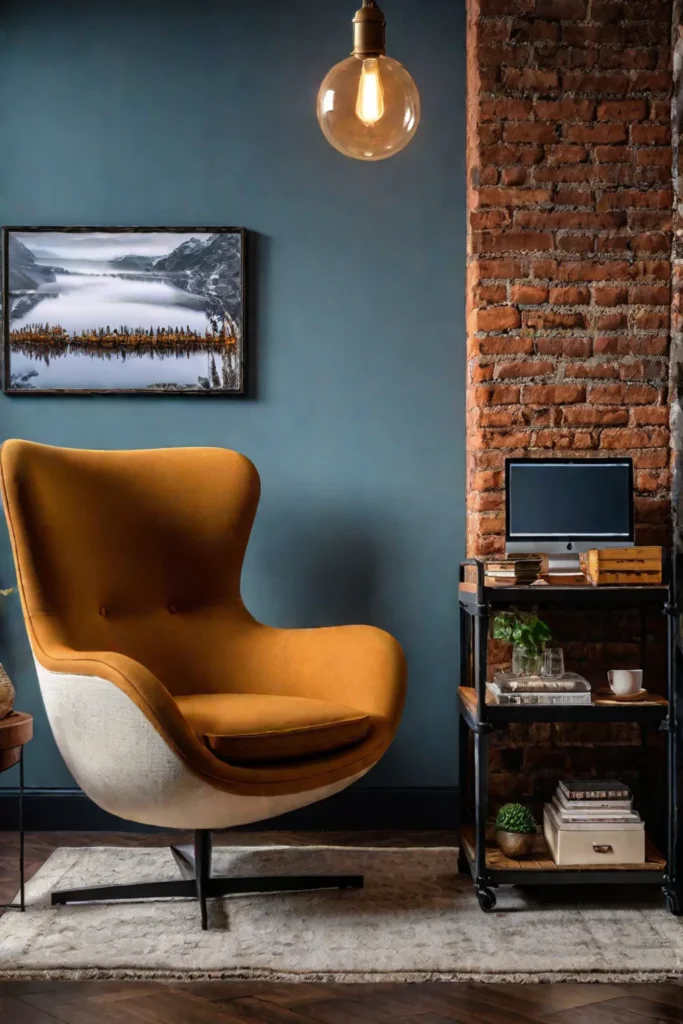
It is also crucial to support sustainable brands that prioritize eco-conscious manufacturing and ethical labor practices. These companies are paving the way for a more responsible and environmentally friendly future for the home furnishings industry.
Ultimately, creating a sustainable living room is about more than just aesthetics – it reflects your values and a commitment to a greener, more mindful way of living. By making conscious choices and embracing the beauty of eco-friendly design, you can transform your living space into a sanctuary that nurtures your well-being and the planet’s.
So, take a deep breath, sink into that recycled plastic sofa, and let the warmth of your sustainable sanctuary envelop you. This is the future of interior design – a harmonious blend of style, comfort, and environmental responsibility. Embrace it wholeheartedly, and let your living room be a testament to the power of conscious living.
